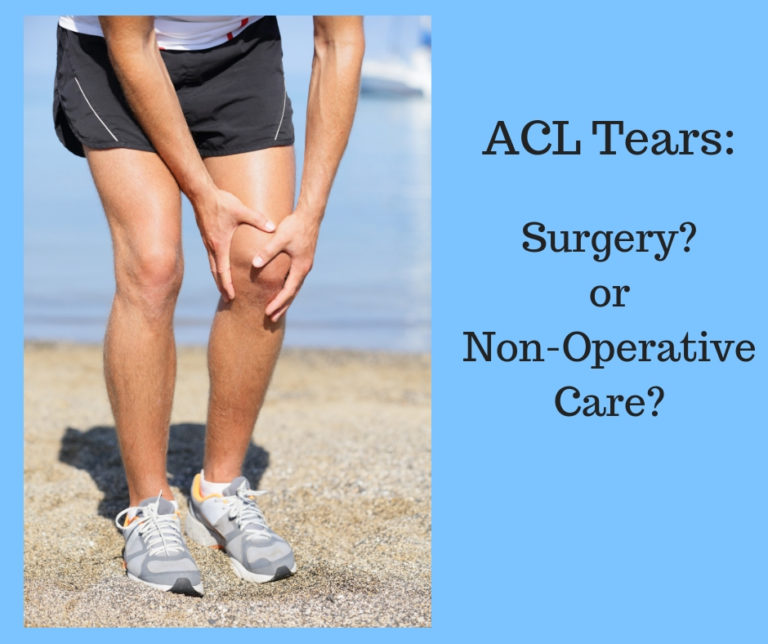An Anterior Cruciate Ligament (ACL) tear is a common injury to sustain during many ‘pivoting’ and dynamic sports including, but not limited to basketball, gymnastics, soccer, and skiing. The mechanism of injury generally involves landing and twisting while your momentum is still being propelled forwards. However an ACL injury can also occur from the knee being struck while the foot is planted. Common practice has typically involved surgery to repair complete ACL ruptures – especially if return to sports is a patient goal. However, it is more recently being found via research that it is not always necessary for everyone with an ACL tear to have surgery. There tend to be two types of patient response to this type of injury. Termed ‘copers’ and ‘noncopers’, some people find that they function well even in the absence of an ACL, while others don’t do as well and struggle without a surgical repair. Sometimes, if you do not participate in ‘pivoting’ or ‘cutting’ sports, you may find that you do well without an ACL, Some individuals are also able to return to sport successfully without an ACL. The circumstances for each individual vary, in part depending on what sport he / she is working to return to, but also with regard to other physical and circumstantial considerations.
One study conducted recently and summarized here observed a total of 300 athletes who experienced ACL ruptures. 118 of these elected not to have surgery within the first 6 months after injury. Tests conducted included concentric quadriceps strength testing, hop tests (both single leg, crossover, and for distance), and 2 patient-reported outcome measures (IKDC and KOS-ADLS). The tests were administered with patients at baseline and then again 5 weeks after a course of rehabilitation. Baseline was defined as when a patient had full knee range of motion, minimal to no knee effusion (swelling), 70% of normal levels of quadriceps strength, and were able to appropriately perform a single leg hop. Overall findings in this study suggested that females who are over 30 years old that regain good knee function early after an ACL injury are more likely to succeed with conservative (non-surgical) treatment than others. Only 5 patients in the study did not ultimately choose to receive ACL surgery. However, those who had surgery later did just as well as those who had ACL reconstructive surgery quickly after the injury.
Although the study mentioned above seems to suggest that surgery is almost always necessary since only 5 out of 300 people ended up not having surgery, it should also be recognized that the subjects in this study were all athletes. It may be that a higher proportion of non-athletes would have ultimately done well without surgery and chosen to indefinitely delay a repair procedure.
It is always a good strategy to discuss your individual situation with your health care team after an injury. It is also always appropriate to try to regain as much normal function as possible before undergoing a surgical procedure. Consideration of your specific activity goals and your level of functionality after an ACL tear will help to determine if surgery or non-surgical care is the right route for you.
If you would like to read more about different treatment options after ACL injury, check out this article, or this guide to different surgical repair options. Your physical therapist at Symmetry would also be happy to answer any questions that you may have.

